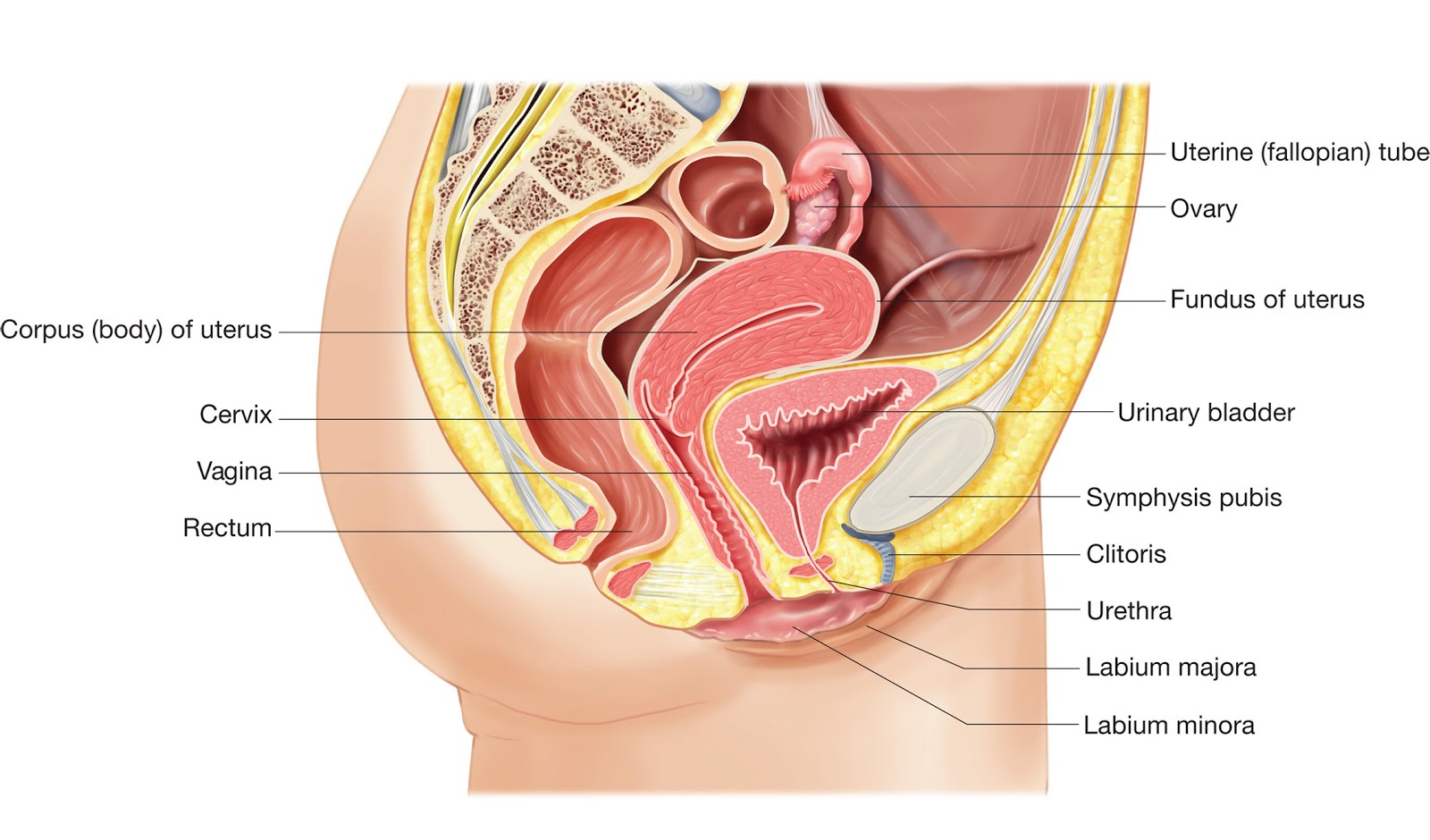Recently breast self exams have become an important part of standard women's health education. A pelvic self exam is still pretty hush-hush material though. We need to change that! You know what your toes and shoulders look like and which angle you can take the best selfie from. But do you really know what you look like "down there"?
Why should you do a self exam?
Remember this scene from Orange Is The New Black where a few of the inmates argue about where pee comes out of?
If you won't do a self-exam for any other reason, then I hope you do it to learn your own anatomy! It's not just a vagina down there - that's only one organ. Remember- "out of sight, out of mind." If you've never looked "down there" then how will you know what is and isn't normal for you?
First and foremost, being comfortable with your own anatomy will make you a better advocate for yourself as a patient. Instead of saying "my vagina hurts" you will be able to use the correct term to specify the location of your problem. Being more specific may help your healthcare provider to make a more accurate diagnosis.
Also, by doing regular self-exams you may catch any changes and get checked out. Hopefully you get a regular pelvic exam (1x/year) and your MD documents thoroughly- but do you really want to leave your health entirely up to them? What if you have to switch providers?
The Basics of an External Pelvic Self-Exam
This will help you to identify the different structures which are visible outside of your body. All you need is a mirror (preferably hand held) and an area with good lighting. In order to perform an internal exam you would need a speculum (that freezing cold metal tool the gyno puts inside you to exam your cervix). Most of us don't have that laying around so this post won't go into it.
Find a time when you know you will have privacy. Get comfortable. Have a glass of wine if it'll calm your nerves.
You can lay back in bed with a couple pillows to prop up your head or you could do this standing up in the Captain Morgan pose (one leg up on the toilet/bathtub, etc). Begin to identify the structures from this picture. You may need to spread the lips (labia) in order to see all the structures.
Keep in mind that there is a huge range in what is considered normal female anatomy. For example, this picture shows a minimal amount of pubic hair, but I picked it because its easy to read and has a good illustration. Women can have different pubic hair color, more/less hair, and different color and sizes of the labia majora/minora.
Mons Pubis: This is a fat pad over the front of your pelvic bones which is meant to provide cushioning during sex. During puberty, hair grows over it.
Vulva: The vulva is a much more encompassing word for the female pelvic floor than vagina. It includes the clitoris, labia, vestibule and vaginal opening.
Clitoris: Ah the clitioris. It's ONLY job is to provide pleasure. Seriously! It serves no other purpose and it also has the highest concentration of nerve endings in the body. The actual gland is covered by a hood of skin. It enlarges when you are turned on due to the increased blood flow to the area.
*Fun Fact: The clitoris is actually a little organ which extends into your body and may come into contact with the front wall of your vagina (when your vagina expands during sex). Researchers now believe that this close proximity is behind the so called "G-Spot" discovery.
Outer Lips (labia majora): These are another point of fatty tissue which helps to cushion the pelvic during sex. Hair also develops over them during period.
Inner Lips (labia minora): The inner lips function as a shield to all the openings of the female pelvic floor and swell with increased blood flow when you are turned on. The space in between the labia minora is known as the vestibule.
Urethral opening: This is the opening of the urethra, the tube which connects to your bladder. And for the OITNB girls, its where your pee comes out of. This is where UTI's develop.
Vaginal opening (introitus): What a fancy term huh? It means "entrance" and is quite literally the entrance to your vagina. We commonly lump all female genitalia together as "the vagina" but that term only applies to the internal organ which connects to your cervix. The vagina is amazing- it can expand enough to let a baby pass through!
Perineum: Cosmo has spent millenia talking about the sexual powers of this little piece of real estate between the vulva and anus. Beneath the skin of this area is the perineal body, which serves as a crucial crossroads of connective tissue and tendons of the pelvic floor muscles.
Anus: Amy Schumer said it best:
Haven't seen this video? Check out Milk Milk Lemonade
Here's a picture of the orientation of all those same structures inside your body. This view is what you would see if you were to be sliced right down the middle. As you can see, there's a lot packed into a small area.
Check back next week for Part 2 where I'll discuss normal and abnormal findings!












